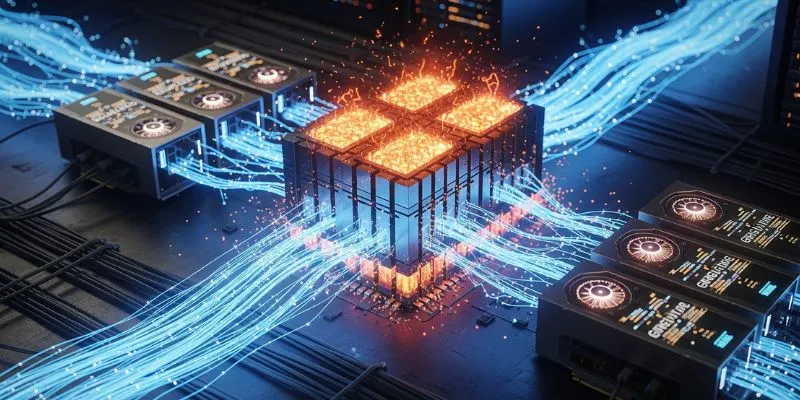Major Tech Players Band Together to Smash AI Data Bottlenecks
The Storage Networking Industry Association (SNIA) just fired the starting pistol on a race to fix AI’s most pressing data dilemma. On August 4, 2025, SNIA unveiled Storage.AI, a bold open standards project designed to break through the storage and data bottlenecks stifling next-generation AI workloads.
For anyone watching the breathtaking growth in AI compute requirements, you know that the real devil is in the data pipeline details: moving terabytes or even petabytes of training data quickly, reliably, and cost-effectively to the AI accelerators that need them. With today’s proprietary approaches and fragmented standards, the ecosystem has become a maze of latency, power, and rampaging infrastructure costs.
15 Industry Giants, One Vision
Storage.AI’s founding team reads like a who’s who of cutting-edge infrastructure: AMD, Cisco, DDN, Dell, IBM, Intel, KIOXIA, Microchip, Micron, NetApp, Pure Storage, Samsung, Seagate, Solidigm, and WEKA have all signed on. Their combined muscle means users from chip manufacturing to enterprise IT will have their voices heard.
SNIA’s goal? “No single company can solve these challenges alone,” says Dr. J Metz, SNIA Chair. Storage.AI aims to forge vendor-neutral, open standards that finally put interoperability and performance ahead of proprietary lock-in. The initiative is also working alongside major groups like NVM Express, Open Compute Project, and SPEC, underscoring its wide industry impact.
Why AI Storage, and Why Now?
AI workloads have become so demanding that traditional data delivery architecture simply can’t keep up. It’s no longer tenable to funnel data through power-hungry server CPUs and DRAM before finally landing in a GPU or AI accelerator’s memory. Every hop adds milliseconds of latency, power draw, and dollar signs to cloud providers’ and enterprises’ bills.
Storage.AI is targeting six key technology breakthroughs to fix this:
Accelerator-Initiated Storage IO (AiSIO): Letting accelerators pull data directly from storage, no detours.
Compute-Near-Memory (CNM): Shifting compute tasks closer to where the data lives, reducing transfer times.
Flexible Data Placement (FDO): Dynamically adjusting where crucial training data gets stored for max efficiency.
GPU Direct Bypass (GDB): Enabling direct storage-to-GPU pathways, leapfrogging CPU bottlenecks.
NVM Programming Model (NVMP): Smarter, application-friendly ways to interact with modern non-volatile memory.
Smart Data Accelerator Interface (SDXI): Unifying APIs so all hardware can efficiently talk to accelerators.
Nvidia: The Giant Not in the Room
Perhaps the most controversial aspect of Storage.AI is the absence of Nvidia—the undisputed heavyweight of artificial intelligence (AI) hardware. Nvidia’s own proprietary GPU Direct system currently dominates the market, giving it enormous sway over how data moves between storage and GPUs. But critics say this locks users in, stifling alternatives and innovation.
By contrast, Storage.AI’s GPU Direct Bypass aims to offer the same performance advantages but as an open standard, removing vendor lock-in and empowering a wider ecosystem. This sets up a potential confrontation between open collaboration and proprietary dominance.
Why It Matters for the Future of AI
This initiative couldn’t come at a better time. As AI applications—particularly generative AI and large language models—demand ever-faster, larger-scale datasets, the cost of suboptimal data pipelines is no longer tolerable for leading companies. Industry-wide, the move toward open, vendor-neutral standards promises lower costs, faster innovation, and a more diverse, competitive AI ecosystem.
If Storage.AI succeeds, it could reshape how the world’s biggest data sets flow through tomorrow’s most advanced computer systems. The tech titans backing this project seem to agree: real AI progress depends on fixing the data pipeline. With or without Nvidia, the open-standards revolution in AI storage has begun.
For organizations interested in joining SNIA’s Storage.AI effort, the door is still open. The future of AI storage may depend on just how many voices sit at that table.














